Breathing to Calmness: The Science Behind Pranayama and Nervous System Regulation
04 April, 2024
Introduction: Rediscovering Breath
Pranayama breathing techniques, from ancient yoga traditions, offer more than just the air we need to survive. Our breath holds hidden power. Can it really help us feel better? Think about those moments of stress or worry – your breath becomes quick, shallow, and tight. But when you're relaxed, it flows deep and steady. This simple change shows that your breath and your nervous system have a special connection.
Pranayama taps into this connection. It uses specific breathing patterns to calm your mind and ease tension in your body. Think of it like switching your nervous system's gears from "fight or flight" back into a place of calm control.
Science is catching up to this ancient knowledge. Studies show that pranayama can lower stress hormones, reduce anxiety, and even improve your mood. It's more than just taking a deep breath – it's a practice that strengthens your body's ability to find balance. So, while we all breathe automatically, pranayama helps us rediscover our breath as a powerful tool for inner peace.
Breath and Being: A Historical Perspective
Pranayama breathing techniques didn't spring up overnight. They have deep roots in ancient traditions across the globe. For thousands of years, various cultures realized the profound link between breath and our physical and mental states.
The word "pranayama" itself comes from Sanskrit, an ancient Indian language. "Prana" means life force or vital energy, and "ayama" means to extend or control. Ancient yogis in India developed pranayama to harness this vital energy, believing it could promote health, clarity of mind, and even spiritual growth.
But it's not just about India. Ancient Chinese practices like Qigong also focused on breathwork to cultivate inner balance. And even in the West, traditions of rhythmic breathing for prayer or meditation have existed for centuries.
As science evolved, the idea of a mind-body connection gained ground. Modern research now explores how pranayama influences the nervous system, potentially explaining the benefits experienced by practitioners for millennia.
From the yoga studios of today to the quiet practices of centuries past, one thing is clear: pranayama is a testament to the enduring human desire to understand, and ultimately master, the subtle power of the breath.
Pranayama and the Brain: A Neurological Overview
Think of your brain as a busy control center. It constantly monitors your body and environment, ready to react to any perceived threat. This is your stress response in action, a survival mechanism from our earliest ancestors. However, chronic stress in modern life can keep it on overdrive, leading to anxiety and overwhelm.
This is where pranayama breathing techniques step in. Research suggests that they can directly interact with neural pathways in your brain, influencing the areas responsible for managing stress. Imagine them like a calming influence on your brain's control center.
Specifically, pranayama works with the autonomic nervous system, which has two branches: the sympathetic ("fight or flight") and the parasympathetic ("rest and digest"). By focusing on slow, rhythmic breathing, pranayama can help shift the balance towards the parasympathetic state, promoting relaxation and reducing the release of stress hormones.
Science continues to reveal the fascinating effects of pranayama on the brain. For instance, some studies suggest it can improve attention, boost mood, and even enhance cognitive function. It's like giving your brain a tune-up for better performance.
Pranayama Techniques and Their Mechanisms
While you may have heard of popular pranayama breathing techniques like alternate nostril breathing, let's dive into a few lesser-known techniques with unique benefits:
- Bhramari (Bee Breath): Get ready to make some noise! This practice involves gently humming as you exhale. The vibrations it creates can have a soothing effect on your mind and nervous system. It may even help relieve tension in your sinuses.
- Sitali (Cooling Breath): Imagine sipping air through a straw. That's the idea behind Sitali, where you inhale through a curled tongue. This practice has a literal cooling effect on the body, making it an excellent choice for a hot day or when you're feeling flustered.
- Chandra Bhedana (Moon Piercing Breath): This technique focuses on extended exhalations through your left nostril. It's associated with calming the mind and promoting relaxation. Think of it as breathing out any lingering tension or negativity.
These are just a few examples. The world of pranayama is vast. Each breath offers specific physiological effects. Some may energize you, while others promote calm. It's like having a toolkit of breathing patterns to address various moods and needs.
Remember, guidance is key, especially when starting. A qualified teacher can personalize pranayama techniques to suit your individual goals and guide you towards safe, effective practice.
Case Studies: Pranayama in Action
Science is great, but sometimes it's the real-life stories that truly show the power of pranayama breathing techniques. Let's take a look at a few examples:
- The Stressed Executive: Imagine a high-powered businesswoman, constantly juggling deadlines and demands, with anxiety gnawing at her. After incorporating regular pranayama into her routine, she noticed a significant shift. Stressful situations became manageable, and her sleep quality improved.
- The Athlete's Edge: An athlete might think pranayama is just about relaxation. But focused breathing exercises can improve focus and breath control during intense physical activity. This could translate to better performance and faster recovery.
- Managing Chronic Conditions: Pranayama, while not a cure-all, can be a powerful complementary tool. Studies suggest it may help individuals manage conditions like asthma, hypertension, and even symptoms of depression.
These stories highlight the diverse applications of pranayama. It's not just about finding moments of temporary calm, but rather cultivating a lasting sense of well-being that impacts all aspects of life. Remember, everyone's journey with pranayama is unique. The key is finding the practices that resonate with you and integrating them into your daily life.
Integrating Pranayama into Modern Life
Let's be honest, fitting anything new into our hectic lives can feel challenging. But the beauty of pranayama breathing techniques lies in their adaptability. Here's how to make them work for you, no matter your lifestyle:
Office Workers: Feeling overwhelmed during a long work day? Take a 5-minute pranayama break. Try alternate nostril breathing or a few rounds of Sitali breath for instant calm and focus. You can even do some of these techniques discreetly at your desk.
Athletes: Boost your performance with pranayama. Before a workout, focus on energizing breaths to fire up your system. Afterwards, slow down with calming techniques to promote recovery and relaxation.
Stay-at-Home Parents: Parenting is rewarding but stressful! When the kids are napping or occupied, steal a few minutes for your own well-being. Pranayama can offer a much-needed reset, helping you tackle the rest of the day with more patience and energy.
Key Tips:
- Start small: Begin with 5-10 minutes daily and gradually increase.
- Consistency is key: Short, frequent sessions are often better than one long practice you squeeze in occasionally.
- Find what works: Experiment with different techniques to discover your favorites.
- Mindful moments: Turn routine activities like your commute or waiting in line into opportunities for mindful breathing.
Remember, pranayama is a journey, not a destination. With a little dedication, you can weave the transformative power of breath into the fabric of your everyday life.
The Future of Breath: Pranayama in Scientific Research
The integration of pranayama breathing techniques with modern medicine is still in its early stages, but the potential is vast. Scientists are actively exploring new areas where pranayama may have a significant impact. Here's a glimpse into this exciting research landscape:
- Mental Health: Studies are focusing on the potential of pranayama to help manage conditions like anxiety, depression, and PTSD. Researchers are interested in understanding how breathwork could complement or even augment traditional therapies.
- Long-Term Illness: Research suggests pranayama may improve quality of life for individuals with chronic conditions like heart disease, chronic pain, and autoimmune disorders. Scientists hope to find effective ways to integrate breathwork into standard treatment plans.
- Brain Function and Cognition: Could pranayama enhance memory, problem-solving skills, and overall cognitive function? Early studies hint at this possibility, especially in aging populations.
- The Science of Subtle Energies: While difficult to quantify, the concept of "prana" or vital energy is central to pranayama. Future research may explore new ways to measure and understand the subtle effects of breathwork on the body's energy systems.
This rapidly evolving field reminds us that the power of the breath is far from fully understood. As research continues, we may discover new applications for pranayama, leading to innovative therapies and a deeper understanding of the mind-body connection. Perhaps one day, doctors may prescribe specific pranayama exercises alongside traditional medications, unlocking a new era of holistic healthcare.
Conclusion: The Breath of Life
We breathe from the moment we're born to the moment we leave this world. Yet, pranayama breathing techniques teach us that there's so much more to this simple act. It's a tool for calming the mind, strengthening the body, and finding balance in the chaos of everyday life.
Science is now confirming what ancient traditions have taught for centuries: your breath has profound power. By learning to harness this power, you too can experience better sleep, less stress, and a deeper sense of well-being.
Whether it's finding focus before a big presentation, unwinding after a long day, or simply cultivating inner peace, pranayama offers a path. So, let your next inhale be the start of something new. Explore the world of pranayama, and discover the transformative power of your own breath.

